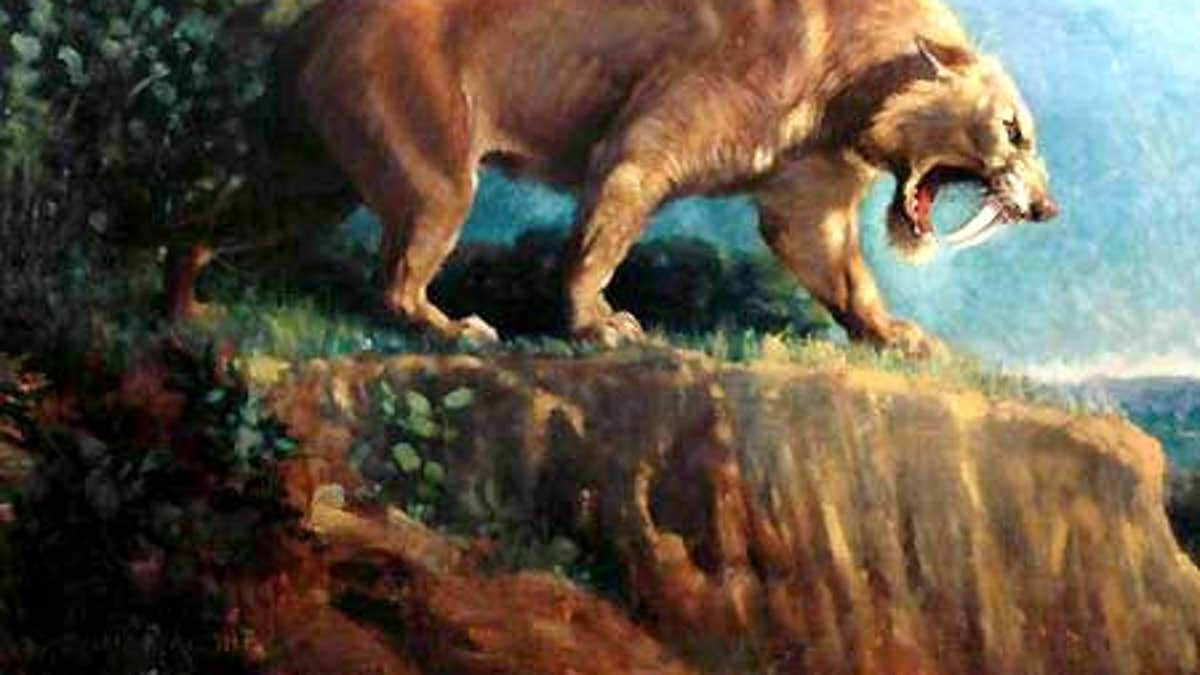
'Smilodon,' a 1905 painting by Charles R. Knight depicting a saber-tooth cat. (Public domain)
LOS ANGELES – Scientists are studying a huge cache of Ice Age fossil deposits recovered near the famous La Brea Tar Pits in the middle of the nation's second-largest city.
Among the finds is a near-intact mammoth skeleton and bones of saber-toothed cats, dire wolves, bisons, horses, ground sloths and other mammals.
Researchers discovered 16 fossil deposits under an old parking lot next to the tar pits in 2006 and began sifting through them last summer.
• Click here to visit FOXNews.com's Evolution & Paleontology Center.
Officials of the Page Museum at the tar pits plan to formally announce their findings on Wednesday. The discoveries could double the museum's Ice Age collection.
Such a rich find usually takes years to excavate. But with a deadline looming to build an underground parking garage for the next-door art museum, researchers boxed up the deposits and lifted them out of the ground using a massive crane.
"It's like a paleontological Christmas," research team member Andie Thomer wrote in a blog post in July.
The research dubbed "Project 23" — because it took 23 boxes to house the deposits — uncovered a well-preserved mammoth with tusks that scientists nicknamed Zed.
An examination reveals Zed had arthritic joints and several broken and re-healed ribs — an indication that he suffered a major injury during his life.
"It's looking more and more as if Zed lived a pretty rough life," Thomer blogged in December.
Some scientists not connected with the discovery said this is the first significant fossil find since the original excavations at the tar pits more than a century ago.
"Usually these things are either lost in the mixing or not recovered in the processing of the oily sand and soil they occur in," paleontologist Jere H. Lipps of the University of California, Berkeley wrote in an e-mail to The Associated Press.
The La Brea Tar Pits ranks among the world's famous fossil sites. Between 10,000 and 40,000 years ago, mammoths, mastodons, saber-tooth cats and other Ice Age beasts became trapped by sticky asphalt that oozing upward through cracks and fissures in the ground. The newly recovered fossils were also in asphalt.
Since 1906, more than a million bones have been unearthed from the sticky ponds.
